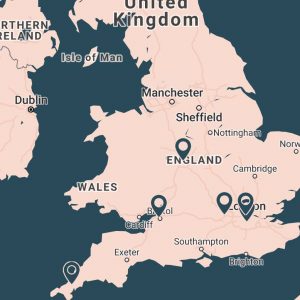Pityriasis lichenoides
Pityriasis lichenoides
What is pityriasis lichenoides?
Pityriasis lichenoides is a rare skin disorder of unknown cause. There are two types of pityriasis lichenoides: an acute (more sudden onset and less persistent) form known as pityriasis lichenoides et varioliformis acuta (PLEVA), and a milder, more persistent form known as pityriasis lichenoides chronica (PLC).
Keep up to date with the latest research about pityriasis lichenoides and all things skin related with our newsletter.
What causes pityriasis lichenoides?
The cause of pityriasis lichenoides is not known. It has been reported to occur in the setting of recent bacterial or viral infections and may represent a reaction to infections.
Pityriasis lichenoides most often affects adolescents and young adults and seems to be slightly more common in males of all skin groups.
Is it hereditary?
No.
What are the symptoms of pityriasis lichenoides?
No symptoms are often experienced in PLC, but in PLEVA, the spots may itch, irritate, or cause a burning sensation as they appear.
What does pityriasis lichenoides look like?
The acute form (PLEVA): Initially, it has been associated with feeling generally unwell with a fever. The rash starts as flat pink or discoloured spots, which may quickly become more inflamed and/or blister and blood-stained crusting may develop. The spots may come up in crops at different times, so the rash often consists of spots at various stages of development. PLEVA can often be mistaken for chickenpox but it takes much longer to clear than chickenpox. The spots are usually scattered on the trunk, arms, and legs. In children, spots may appear more on the face than at other areas of the body. Scarring and changes in skin colour may occur when the crust falls off.
The chronic form (PLC): The spots look less red or inflamed than in PLEVA and are covered with a firm shiny scale (flake) of skin. The scale can be scraped off by a dermatologist to reveal a shiny, red-brown, or discoloured surface underneath, and may help with confirming the diagnosis. Individual spots flatten within 3 to 4 weeks and the scale becomes loose, often leaving temporary marks which appear darker than the individual’s skin colour. The marks gradually fade away. However, new spots may then appear. Scarring is less likely in PLC than PLEVA. The signs of PLC may be more subtle in more deeply pigmented skin.
How will it be diagnosed?
The appearance of the rash will suggest the diagnosis. However, PLEVA can often look like chickenpox but take much longer to clear than chickenpox, and PLC can look like psoriasis (red, flaky, crusty patch of skin covered with silvery scales). The examination under the microscope of a small sample of the rash (a skin biopsy) taken by a dermatologist can confirm the diagnosis.
Can it be cured?
No treatment is certain to cure the condition. New spots may stop developing after a few weeks, with many cases clear within 6 months. However, the rash may come back and some cases of PLEVA and PLC can wax and wane for several years. The reason for this is currently unknown.
How can it be treated?
- Steroid creams/ointments or tacrolimus ointments may improve symptoms and the healing of spots, but they do not make the rash disappear more quickly.
- Natural sunlight may be helpful and phototherapy with ultraviolet-B, or a combination of tablets known as psoralen + ultraviolet-A (PUVA), may be suggested by your dermatologist to treat the rash. Sometimes PUVA is combined with a tablet called acitretin.
- Reports suggest that antibiotics such as erythromycin or tetracyclines can be given for up to three months and may help some patients.
- Steroid tablets or immunosuppressants such as methotrexate, ciclosporin, or dapsone may be considered for cases that do not respond to other treatment or in very severe cases.
Self care (What can I do?)
No treatment is required if the rash is mild and not causing any symptoms, such as itch, but if you are concerned, you may need to seek advice from your doctor.
Images DermNetNZ.
